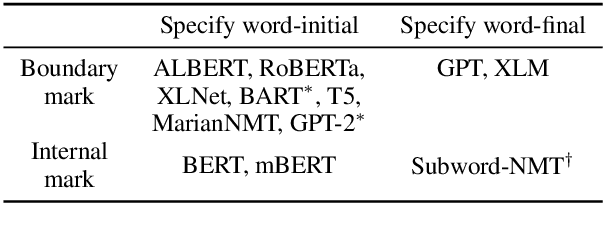Lost in Space Marking
Paper and Code
Aug 02, 2022



We look at a decision taken early in training a subword tokenizer, namely whether it should be the word-initial token that carries a special mark, or the word-final one. Based on surface-level considerations of efficiency and cohesion, as well as morphological coverage, we find that a Unigram LM tokenizer trained on pre-tokenized English text is better off marking the word-initial token, while one trained on raw text benefits from marking word ends. Our findings generalize across domains.
* Submission to SIGMORPHON 2021
 Add to Chrome
Add to Chrome Add to Firefox
Add to Firefox Add to Edge
Add to Edge